What’s the most useful tool in the world?
If you answered, “A fully charged smartphone with service,” you’re probably right.
And if the question is, “What is the best tool for surviving in the wilderness?” The answer is still a fully charged smartphone with service…
But a solid knife is a close second!
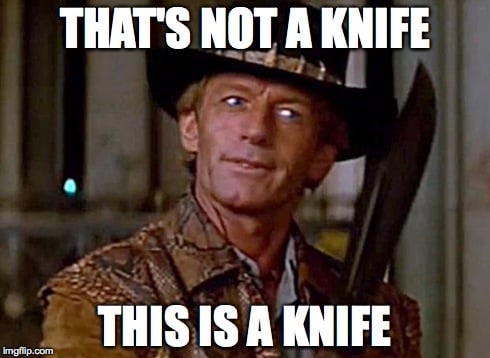
So, what makes a survival knife? What’s a survival knife for? What’s the best survival knife?
Let’s take a look, and hopefully, you will find the right knife for you and your budget.
THE QUICK LIST
-
Best Overall Pick
-
Most Affordable
-
Editor’s Pick
-
Best Classic-Style
-
Best High-End Option
Table of Contents
Loading…
Best Survival Knives
1. Gerber StrongArm
The Gerber StrongArm and I go way back. I’ve nearly worn the finish off of one of them, so I gladly grabbed another. This is a full tang knife offered with either partial serrations or a straight blade, and sports a blade made from 420HC stainless steel.
The blade is coated with a Cerakote finish that is pretty resistant to wear. However, after years of heavy use, I’ve worn mine down significantly.
Prices accurate at time of writing
Prices accurate at time of writing
-
25% off all OAKLEY products - OAKLEY25
Copied! Visit Merchant
One of the reasons I love this knife is the handle; it is glass-filled nylon with a rubberized grip. The grip is textured with a series of small diamonds and is soft and comfortable.
The pommel features a glass breaker and lanyard loop. Its spine has a nice square edge for striking ferrous rods, and the blade is a drop point design.
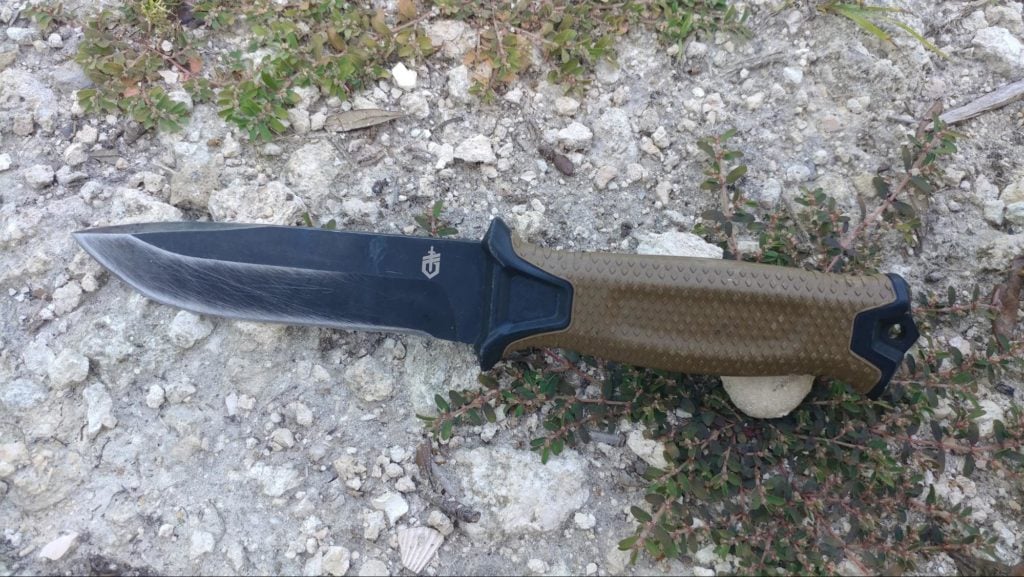
Over time, I’ve found it to be a rugged knife that’s very comfortable for extended use.
The Gerber StrongArm also has an outstanding sheath system that provides multiple options for carrying. There is the traditional vertical belt option. You also can carry the knife horizontally or on a MOLLE platform.
Overall, the StrongArm is an affordable and modern platform for all your survival knife needs.
2. The Original KA-BAR
I have a substantial degree of bias when it comes to the Ka-Bar. Why? Well, it is the legendary Marine-issue combat knife, and I am a Marine.
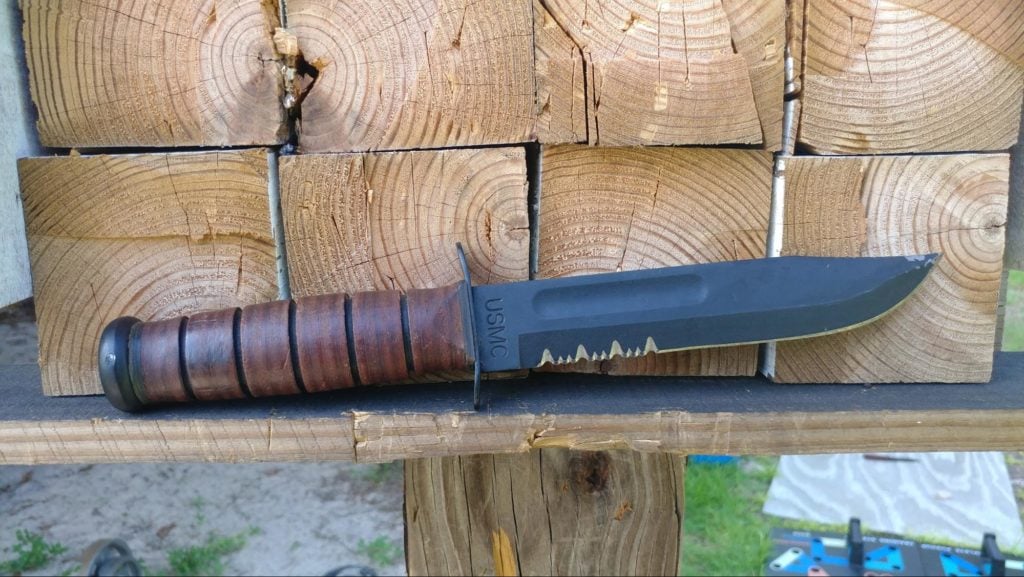
When I was in, we had Ka-Bar bayonets issued over the standard Ka-Bar, but as a machine gunner, I didn’t carry a bayonet very much. However, I did bring my favorite Ka-Bar, and this knife has been everywhere I have.
The Ka-Bar is on the larger end for survival knives with a 7-inch blade and an 11.75-inch overall length. It is constructed from 1095 Cro-Van steel, which can achieve a wicked edge that stays sharp for a long time. It also comes in either partially serrated or straight edge.
The Ka-Bar has a pretty defined clip point that gives the knife a nice belly for deep slashes or skinning game.
Prices accurate at time of writing
Prices accurate at time of writing
-
25% off all OAKLEY products - OAKLEY25
Copied! Visit Merchant
It also uses a rat tail tang, meaning the steel in the handle is thinner than the blade. However, 1095 is hardened steel and seems to resist breakage well.
Scabbards for the Ka-Bar come in plain leather that’s a bit old-school but effective. Luckily, the Ka-Bar has been around so long you can find a variety of modern aftermarket options for it.
The Ka-Bar is a rugged and sturdy knife that will give you years of service. If this model is a little big for you, they make a variety of different-sized models that are a little more carry-friendly.
3. Morakniv Garberg
The Garberg is Morakniv’s first full tang knife. This isn’t a tactical knife and doesn’t try to be; it’s just a simple knife designed to work hard and work outdoors.
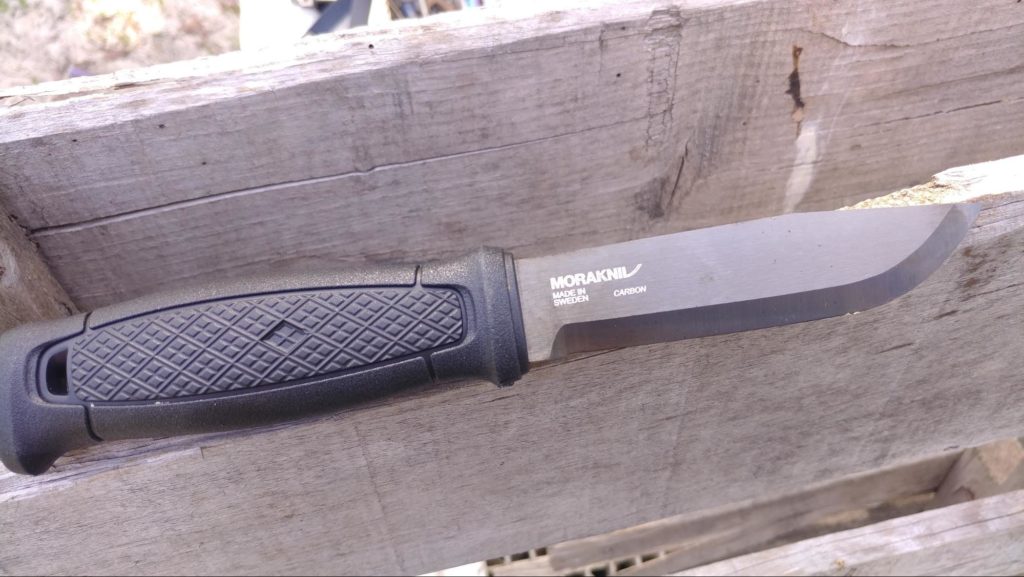
The steel is a 14C28N Sandvik stainless steel, which has proven to be robust and reliable throughout my use. It holds an edge pretty well for stainless and gets very sharp but takes a little effort to get it there.
The square-edged spine has a very sharp edge and has been the best knife I’ve ever used for striking ferrous rods. It has a well-rounded grip that feels very comfortable in hand. My only complaint is I wish it were textured a little more. However, it has never slipped, so maybe they are on to something.
When it comes to cutting, this thing drives through whatever material you put in front of it. The blade chews through wood and has no issues batoning, chopping, or carving.
Prices accurate at time of writing
Prices accurate at time of writing
-
25% off all OAKLEY products - OAKLEY25
Copied! Visit Merchant
The multi-mount sheath allows you to carry this knife in any way you see fit and is perfect for those looking for versatility. My only complaint about the sheath is how far down the knife sits in it, which can make it harder to establish a good grip from the sheath.
4. ESEE-4
The ESEE-4 is the knife I’d take if you told me I was going into a survival situation. Even more than my beloved Ka-Bar (blasphemy, I know).
This is a simple, robust knife, designed by those who adventure for a living.
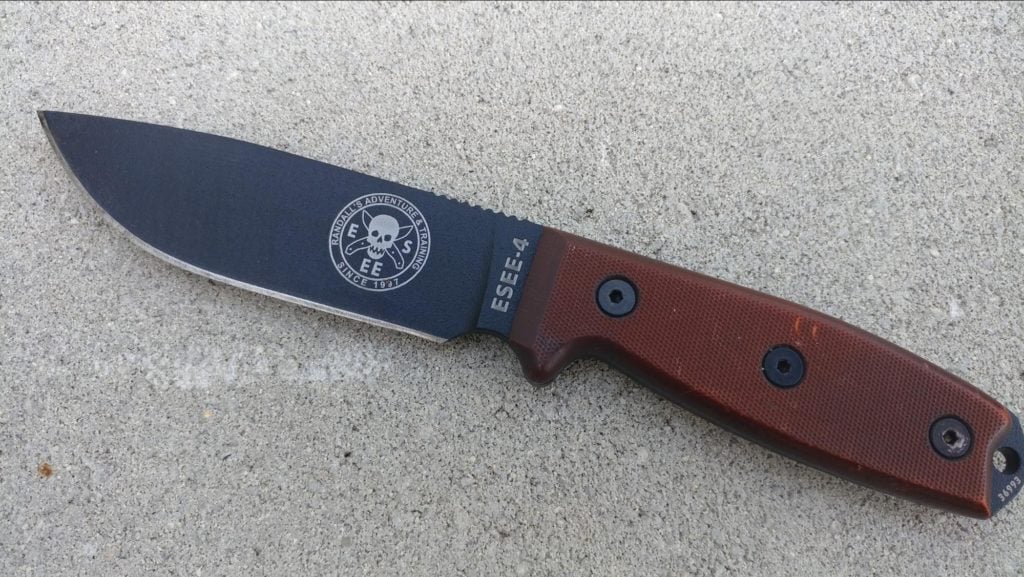
Designed by the same crew who run Randall’s Adventure and Training, a survival school that teaches a wide variety of different classes in land navigation, dirt medicine, bushcraft skills, field survival, and much more.
Rocking a full tang 4-inch blade made from 1095 high carbon steel, which is renowned for its strength, the ESEE-4 is a durable knife. It can break through the ice, dig holes, cut through vines, wood, and more with absolute ease.
Prices accurate at time of writing
Prices accurate at time of writing
-
25% off all OAKLEY products - OAKLEY25
Copied! Visit Merchant
The handles are thick but made of lightweight Micarta, with the whole package only weighing 8 ounces.
ESEE has made this blade solid and thick, with a square spine and a ridged thumb rest portion to extend your control over the knife for fine cuts.
It has a solid belly for deep slices and a rock-solid point for deep stabs. The ESEE-4 also has many aftermarket sheaths available.
5. KA-BAR Becker Kephart
Horace Kephart is a forefather of American bushcraft and designed the original Kephart knife decades ago. KA-BAR has since dedicated itself to making a faithful replica of the blade that doubles as a darn fine survival knife. The Kephart is a fixed blade knife that’s far from tactical but highly efficient.
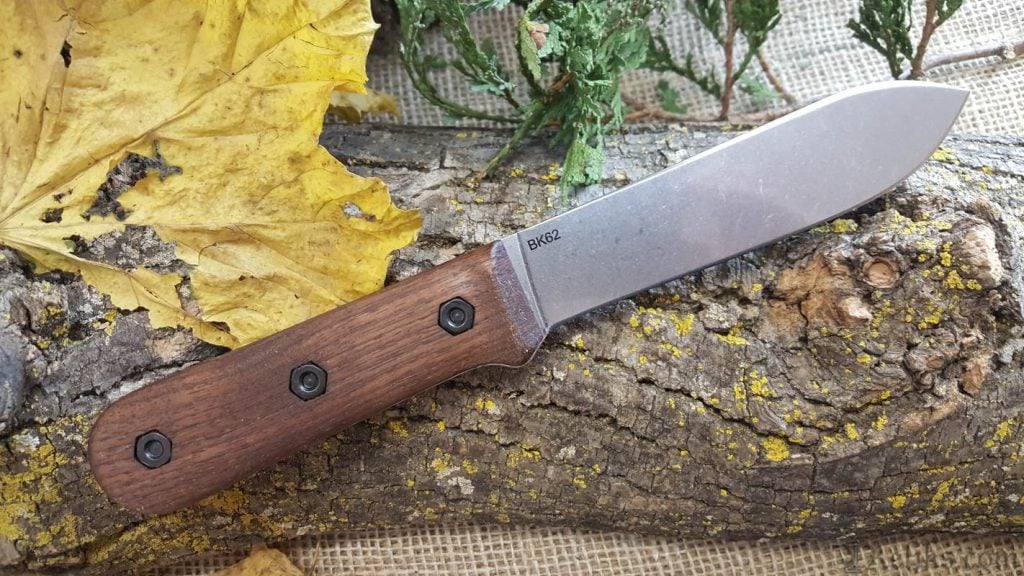
The Kephart uses a 5.125-inch blade made from 1095 CRO-Van stainless steel and a walnut handle. KA-BAR’s knife predictably uses a full tang design and incorporates a 1.1875-inch wide blade that’s flat but nimble, durable, and easy to use.
It has a spear point blade at the tip that lends good versatility to the knife. The point is excellent for piercing and raw stabbing potential and allows for fine, controlled tip work for precision crafting and even drilling. This also allows the knife to be lashed to a stick to form an effective spear.
The blade sports a full flat grind that is quite versatile and makes the knife a solid slicer and slasher when needed. The spine swedge makes it easy to cut through thick items without the blade catching. It absolutely glides through tomatoes but will also glide through anything in the wild.
Prices accurate at time of writing
Prices accurate at time of writing
-
25% off all OAKLEY products - OAKLEY25
Copied! Visit Merchant
A Becker Kephart in good hands can be used for almost anything, including skinning game, cutting, woodwork, making feather sticks, and more. It’s a classic that’s always worked and always will.
What do you think of the Ka-Bar? Rate it below!
6. Benchmade Anonimus
Let’s move into a more modern space with the Benchmade Anonimus — a fixed blade, ultra-modern slicer perfect for survival tasks. Benchmade gives us a 5-inch blade, with an overall length of 9.83 inches, but it only weighs a feathery 5.94 ounces.
Benchmade embraces the new school with the G10 grip scales and the Boltaron sheath, which is one of those fancy modern polymers. G10 is an excellent material because not only is it tough, but it’s super grippy and easy to hold onto.
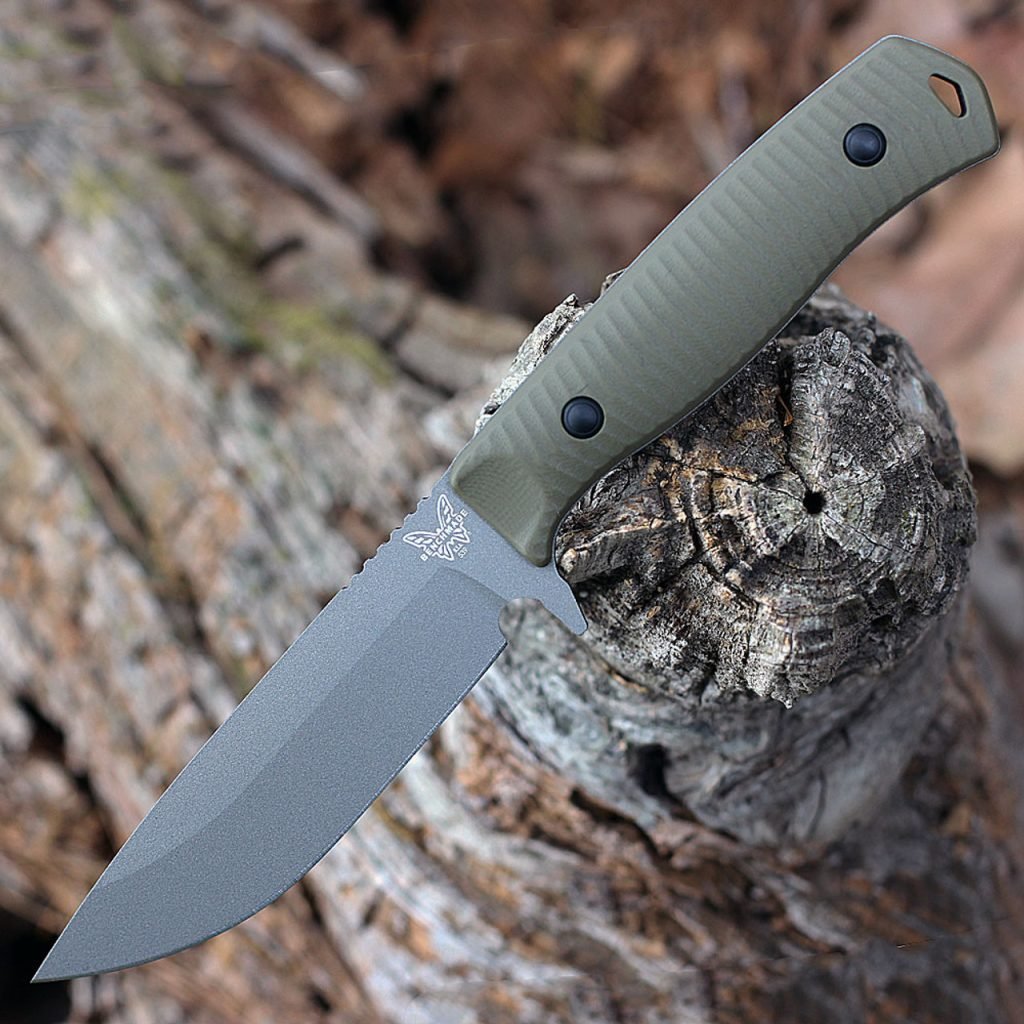
CPM-CruWear is new to me, but since it’s an upgrade to D2, I can’t help but love it. It’s like D2 but stronger, harder, and more resistant to wear, all of which help this knife keep an edge for a long time.
A downside to CPM-CruWear would be the weak corrosion resistance. However, Benchmade took precautions and cerakoted the blade to help prevent that.
The Anominus has a relief cut at the bottom of the blade near the handle called a choil. A choil allows you to strike ferro rods more easily than using the blade’s spine.
Prices accurate at time of writing
Prices accurate at time of writing
-
25% off all OAKLEY products - OAKLEY25
Copied! Visit Merchant
If the Anonimus’ blade guard feels familiar, it’s because a Geissele trigger inspired Benchmade. It’s big, mean, and ensures your hand won’t open itself up on the razor-sharp blade. The first rule of survival is “keep the blood in your body.”
Ultimately the biggest turn-off to the Anonimus is its price. You aren’t getting a budget-friendly option by any means. However, your money still gets you a rock-solid knife that will be perfect for survival situations.
7. TOPS Knives Brakimo
TOPS is well known for making end-of-the-world-ready knives, and the Brakimo is no exception. The Brakimo comes from the mind of Josh Flowers at Bushcraft global, and it’s made for on-the-ground bushcraft work that translates easily into surviving in the wild.
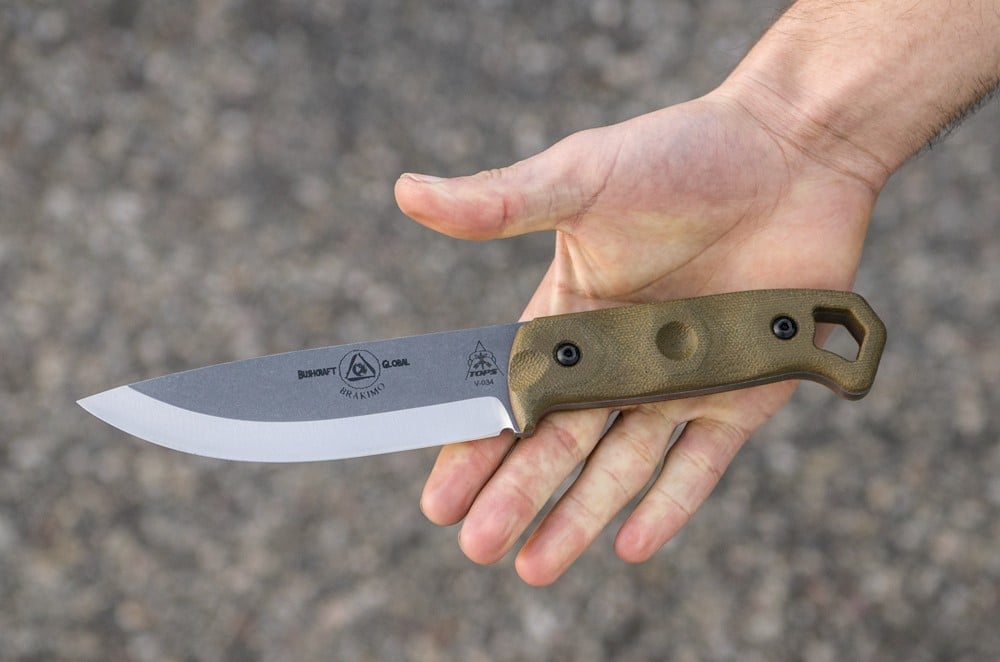
This fixed blade brute comes with a 5.25-inch blade with an overall length of 10 inches and a weight of 9.4 ounces. Not terrible by any means, and it’s certainly weight-efficient. TOPS went with 1095 carbon steel.
To prevent rust, TOPS applied a rugged cerakote finish in an attractive stonewash style finish. Looks aren’t a huge concern, but I can appreciate a good-looking knife.
The Scandi-style grind promises a straight cutting edge that strips branches and turns them into feather sticks and batons through wood like an animal. It’s a big knife that does big knife things with style.
Prices accurate at time of writing
Prices accurate at time of writing
-
25% off all OAKLEY products - OAKLEY25
Copied! Visit Merchant
A full tang grants that additional strength we all want from our survival knives. Imagine your knife snapping in the woods, and you hear the Curb Your Enthusiasm music in your head. At the end sits a massive lanyard loop, so get your retention on boys and girls.
To complement the rugged blade, we get rugged grips. TOPS went with Micarta panels that bolt onto the knife that can be easily removed for maintenance purposes. The sheath is a modern polymer design that fits well with modern gear and allows you to mount various modern belt clips.
Folding or Fixed?
The debate between folding and fixed blades can rage all day, but when it comes to survival knives, fixed blades are the way to go.
Modern folding blades from companies like Emerson are robust and durable, but they still aren’t the best for survival.
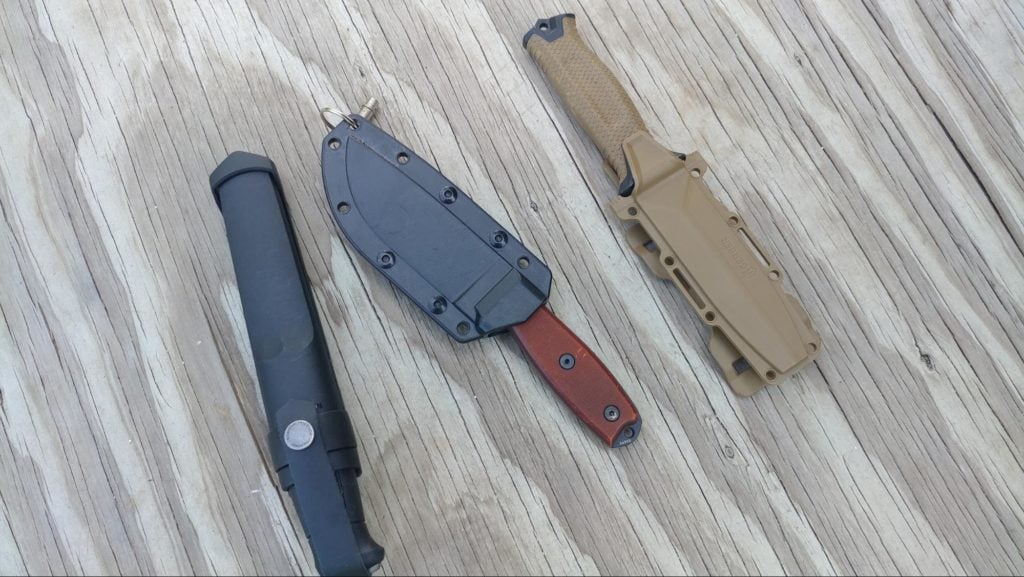
Survival knives can’t sacrifice strength, not even an inch, for the sake of convenient carry.
With that said, I also carry a pocket knife everywhere.
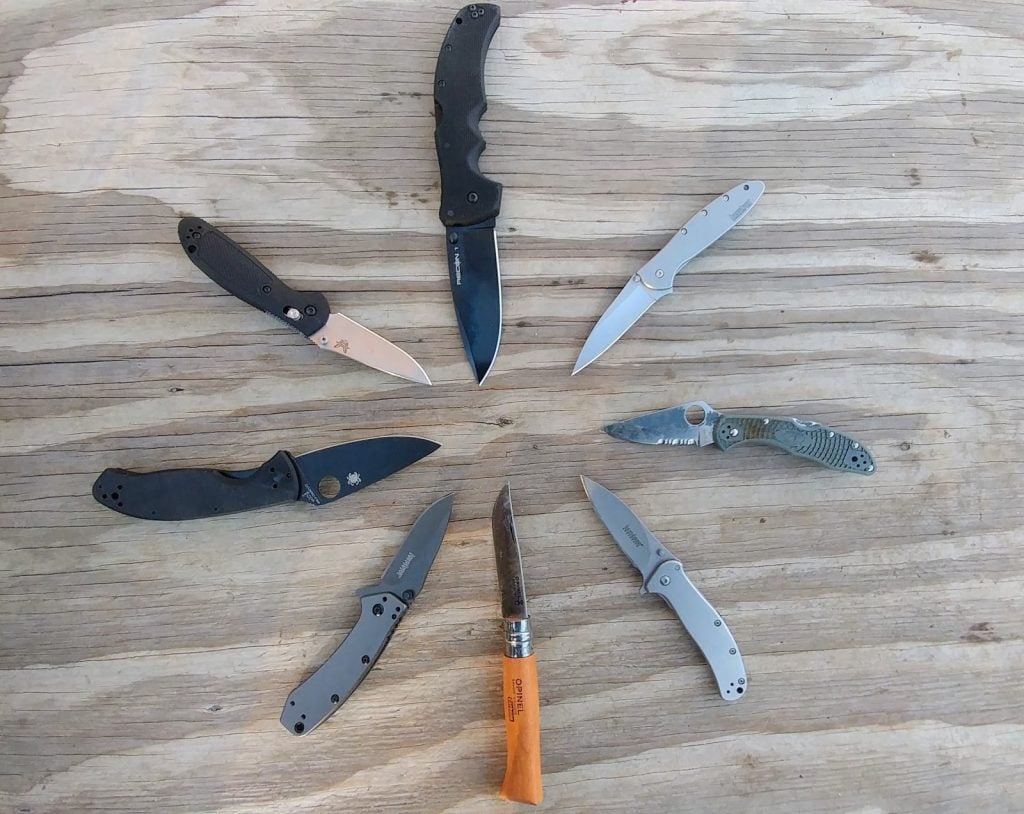
In a survival situation, I’ll have two knives…hopefully.
What Features Should You Consider?
Tang
This is a straightforward one, full tang or bust. Those cute little knives with hollow handles to store fishing gear, flints, and other items are useless. They’ll break in half in about two minutes of heavy use.
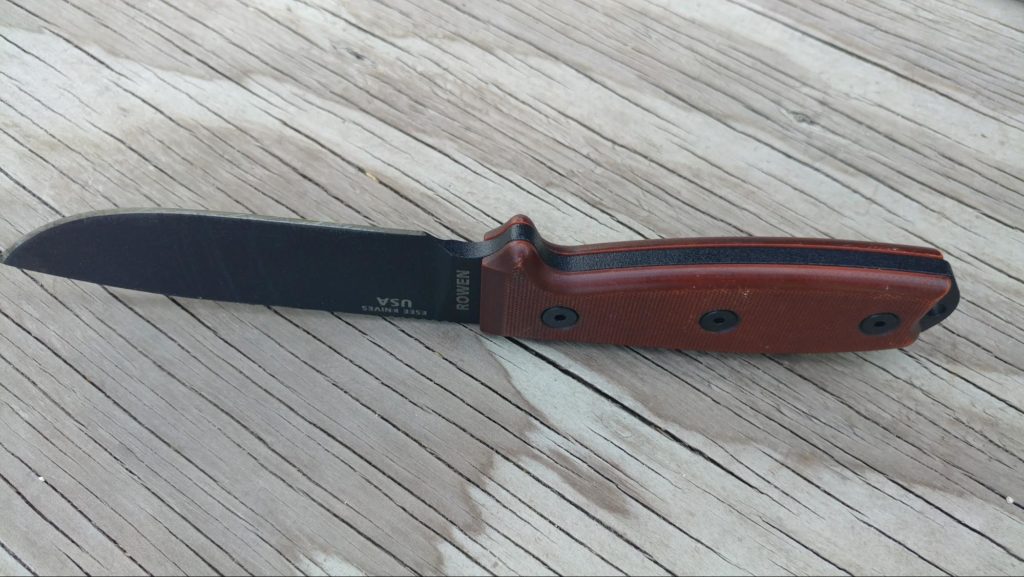
A full tang means the blade extends all the way into the handle, giving the blade greater integrity and reducing the likelihood that the blade will snap at its base. This is the second must-have on our survival knives checklist.
Grips
Knives have tons of different grip materials and styles. There isn’t a significant requirement I’d give as a checklist for one type of grip or grip material. This is more guidance on choosing a good grip on a survival knife.
You should look for an excellent full grip that fills your hand. This will help with comfort and reduce fatigue when working for extended periods.
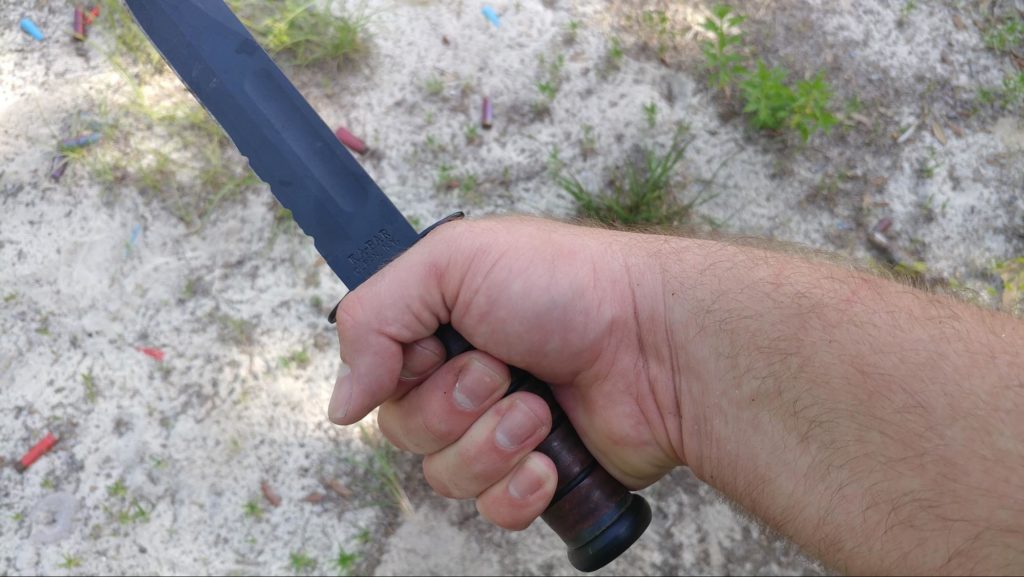
Material wise can be nearly anything. You’ll see leather, G10, different polymers, and rubbers. You generally want it to be textured to ensure the knife doesn’t slip.
You want to be able to hold the knife with a good grip with wet and sweaty hands or when wearing gloves. Anything too aggressively textured may give you hot spots while you are working.
For example, I like my Emerson PUK. It’s a great knife, but the grip isn’t the best for a survival knife. The grip is thin and very aggressively textured, and it starts to grind into the hand after a while.
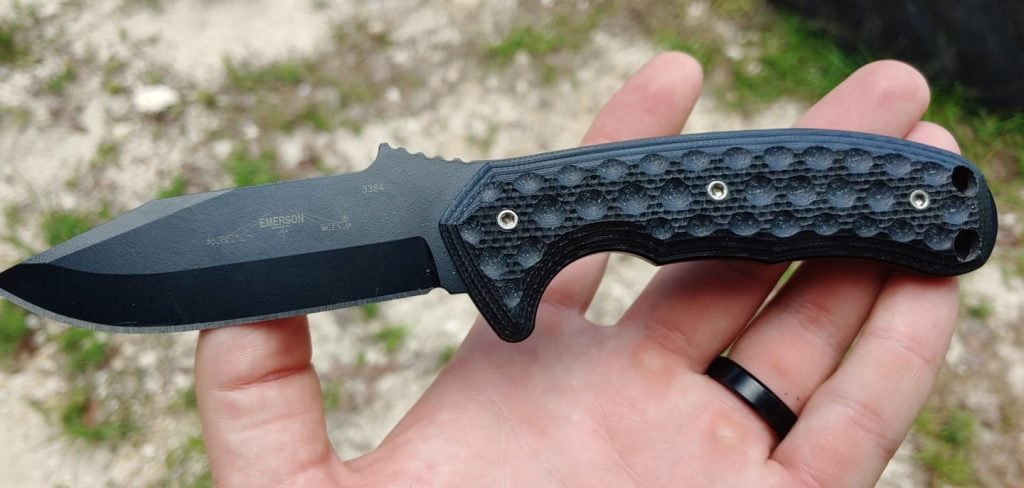
Blade Features
Defining what your blade should be is another thing that’s never going to be set in stone. With so many different knives out there, it’s hard to say that one is better than the other. Let’s talk about the pros and cons of various features.
For a survival knife, I recommend between 3.5 and 7 inches for the blade. Anything shorter is a little rough for heavy work, and anything over 7 inches can become unwieldy.
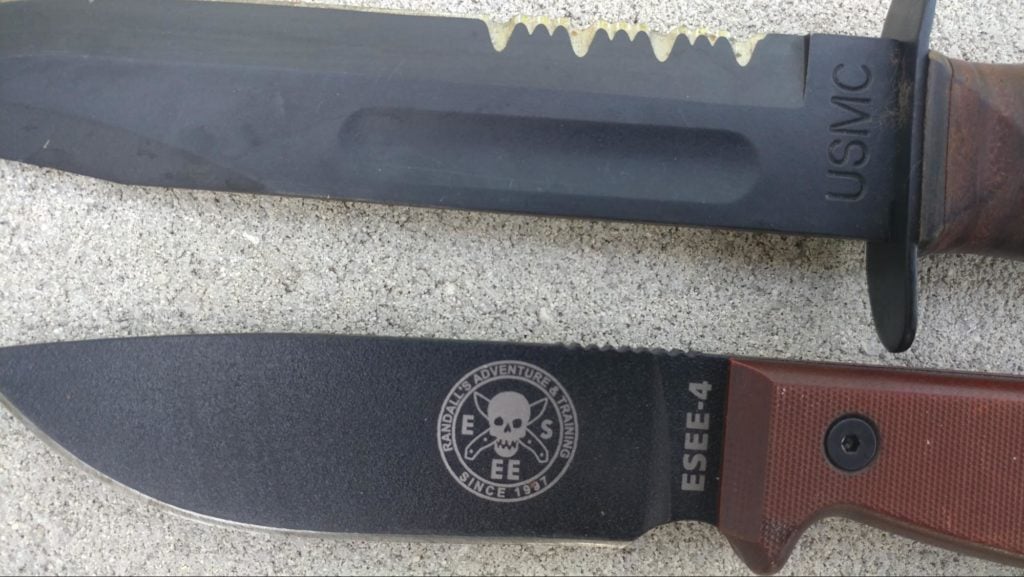
Blade style can differ greatly. I prefer a clip or drop point, as they are a bit more versatile. Tanto blades and spear points are okay but better suited for tactical knives than survival knives.
Should your blade be serrated or straight?
Straight edges are easier to sharpen and offer the maximum blade length for making slices and cutting deeply.
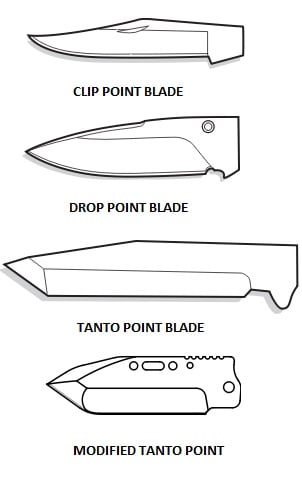
Serrated blades can make chewing through thicker brush much more manageable. However, the edges are a little more challenging to sharpen, and you lose straight blade cutting space.
The spine is the back of the blade and can be crucial for survival tasks. For a survival blade, I like a nice square spine. A square spine makes it easy to strike ferrous rods and sends sparks flying outward.
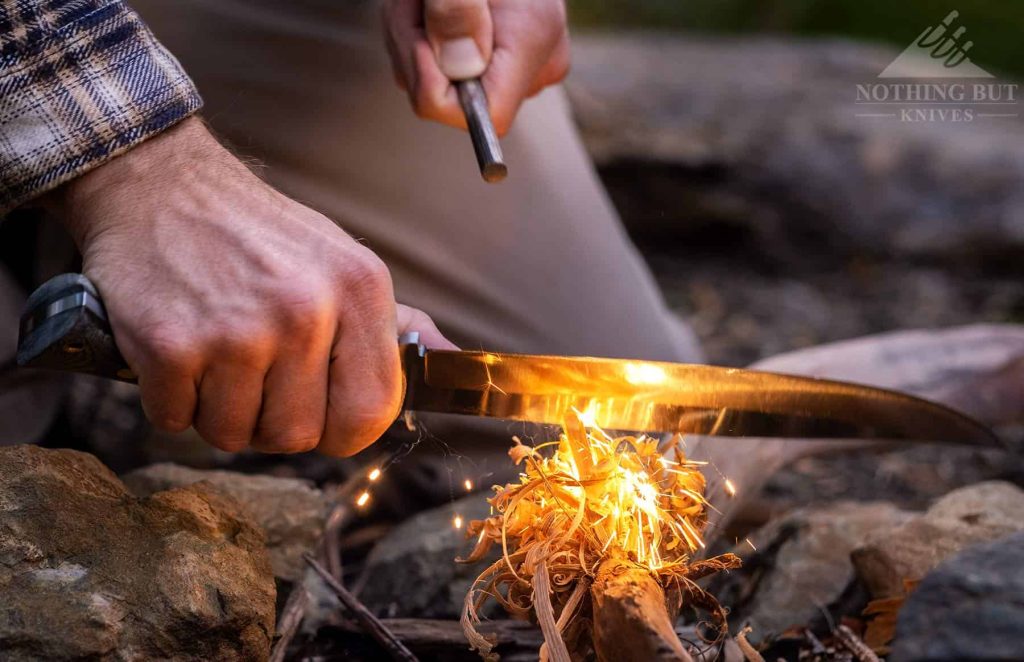
A square spine is also great for batoning wood since the flat top gives you a better surface for hammering down on.
Does Blade Steel Matter?
Blade steel is critical, and you should always research what that steel is and its strengths and weaknesses.
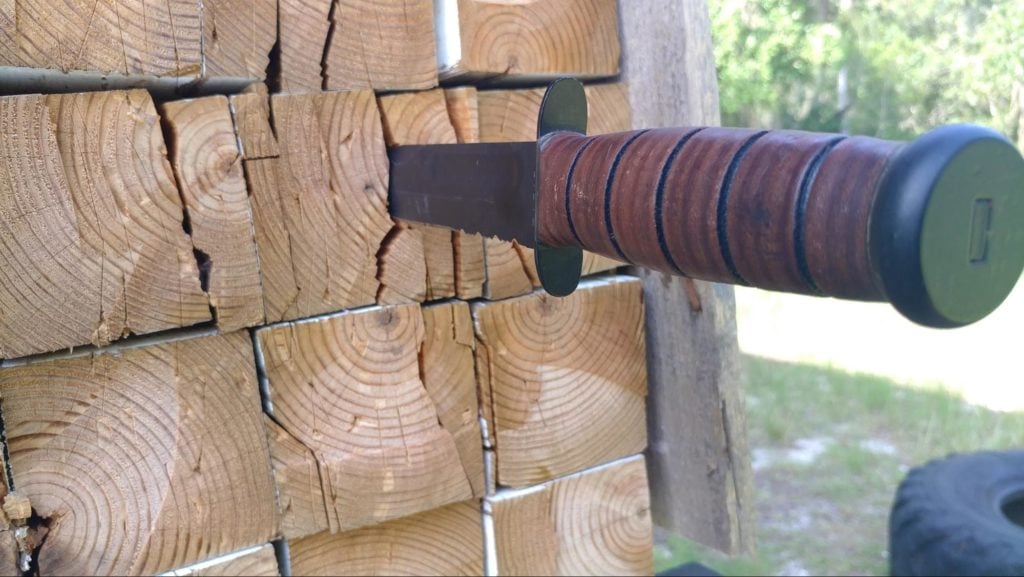
However, just because you see some random letters and numbers – doesn’t mean that is good steel. If you’re unsure what steel you’re looking at, Google it!
Here are a few types of common, well-made steel that you can trust.
- AUS-8
- 420HC
- 154CM
- S30V
- 1095
- 440C
Stainless vs. Carbon
Both stainless steel and carbon steel have their merits. I like both, but let’s talk a little about each.
Stainless Steel
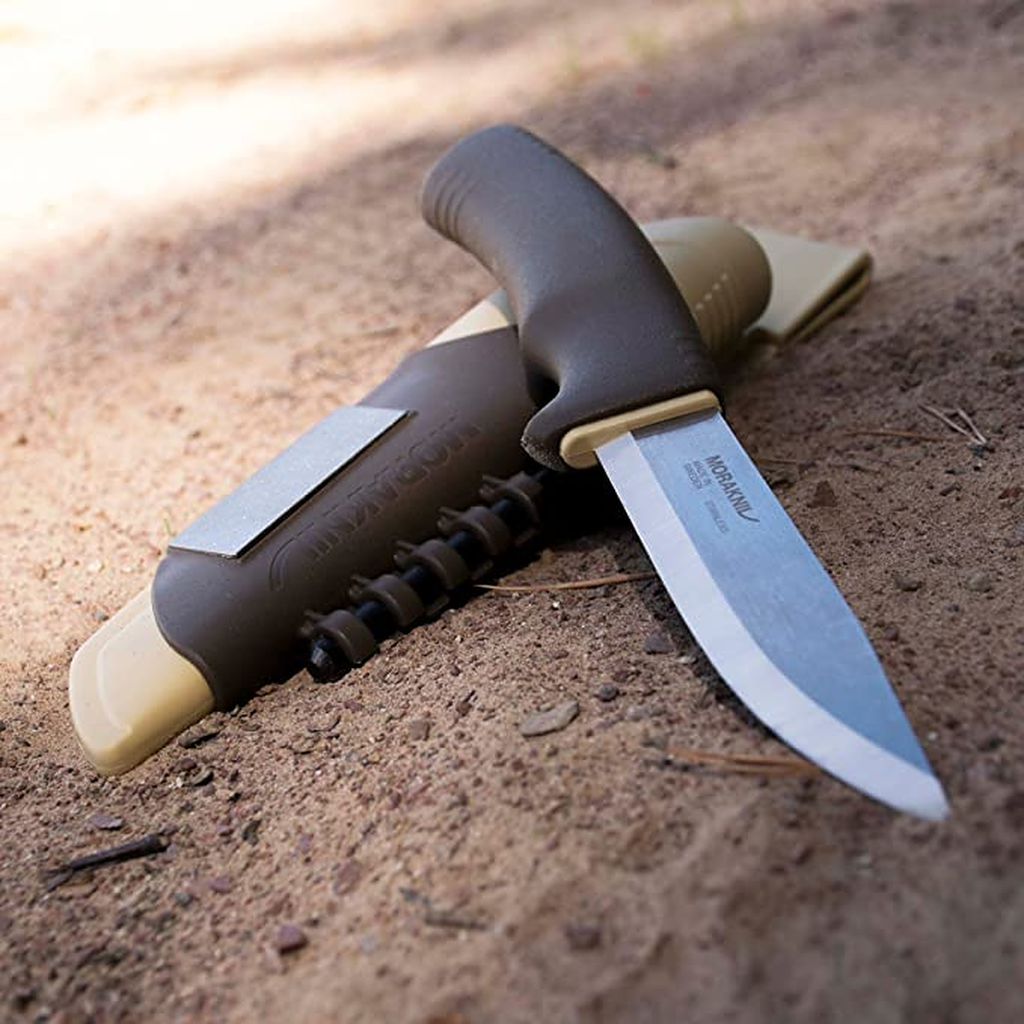
Stainless steel knives rock when it comes to overall strength and corrosion resistance. They won’t rust, chip, or bend very easily. Stainless steel also looks a little sexier.
The downside is that while it’s easier to sharpen, it won’t hold an edge as long as high carbon steel.
High Carbon Steel
High carbon steel can be extremely sharp — nearly surgical. It is usually a little tougher to hone but holds a great edge over long and hard work and is perfect for precise cutting.
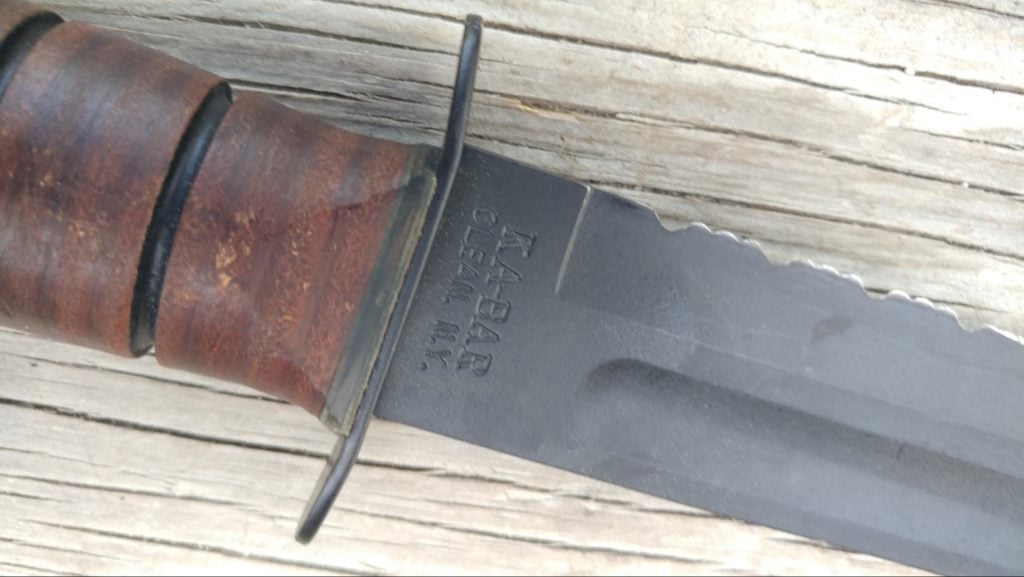
The downside is that they will rust faster than stainless steel.
Survival Knife Tasks
A survival knife is expected to be able to handle a lot more jobs than your average knife. If it can’t handle these, it has no business calling itself a “survival knife.”
Here are a few everyday tasks your survival knife may see.
Cutting and Chopping
There will likely be some necessary cutting and chopping tasks your knife will be called upon to do — from trimming limbs off trees to clearing a place to sleep.
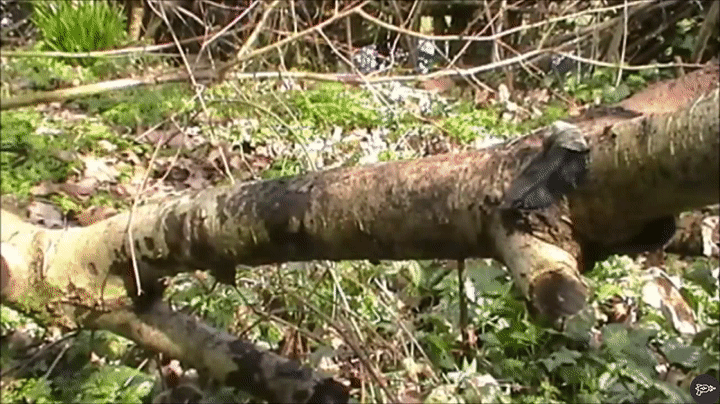
These essential tasks are the most common and simplest out there.
Cleaning Game
You’re out in the wild, alone, but you’re hungry. If you got the skills or the luck, perhaps you catch a fish, snare a rabbit, or down a deer. What now?
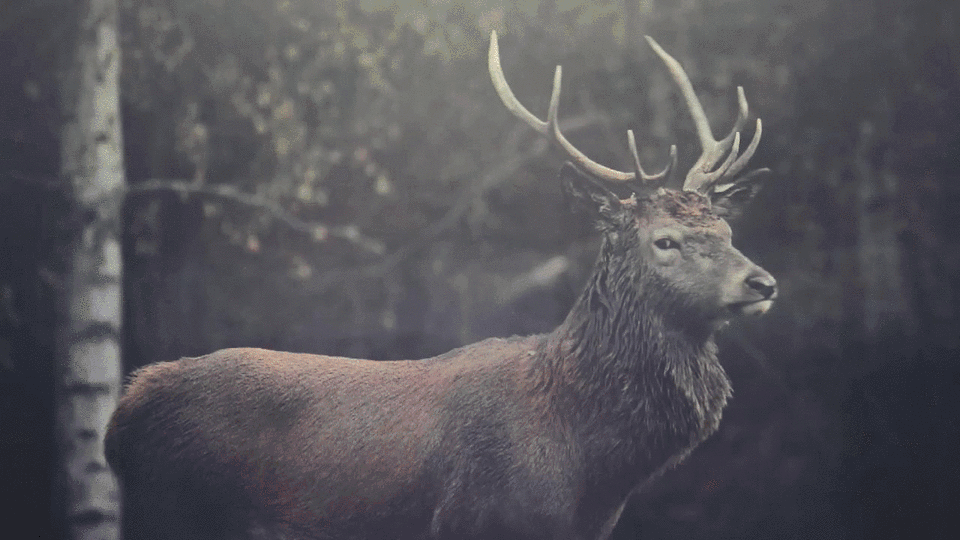
You have to skin that bad boy. A survival knife needs to be able to skin and dress an animal. You need a sharp knife with a good belly to make those precise cuts.
Batoning Wood
Batoning wood is when you use a knife and a hammer substitute to split wood. The hammer substitute is often another piece of wood used to drive the blade through the limbs.
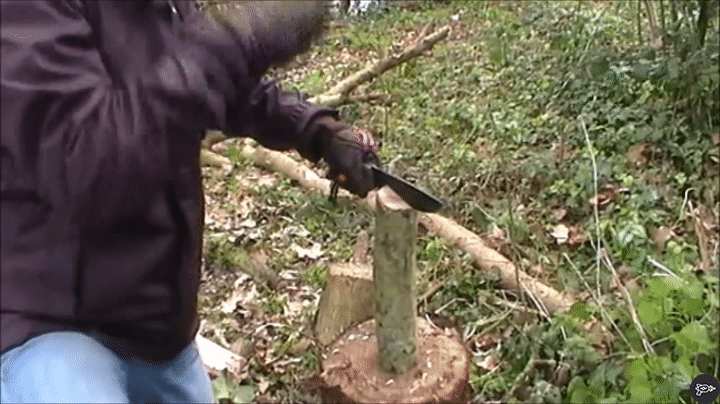
This means you need a rugged and sturdy knife that drives its way through a nice thick piece of wood.
Starting Fires
You can’t cut your way into a fire, but you can use a knife to strike ferrous rods to help start fires. These rods need a nice sharp spine to create the friction required to create sparks.
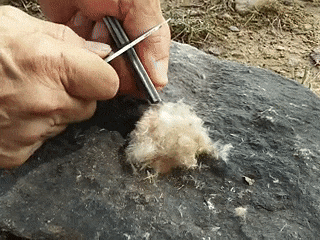
With these tasks in mind, how do you find a knife to satisfy each one?
Final Thoughts
Before we depart, let’s go ahead and talk a minute about what to avoid. There is a lot to consider, but mostly you want to avoid fantasy knives or cheap steel that put looks over function.
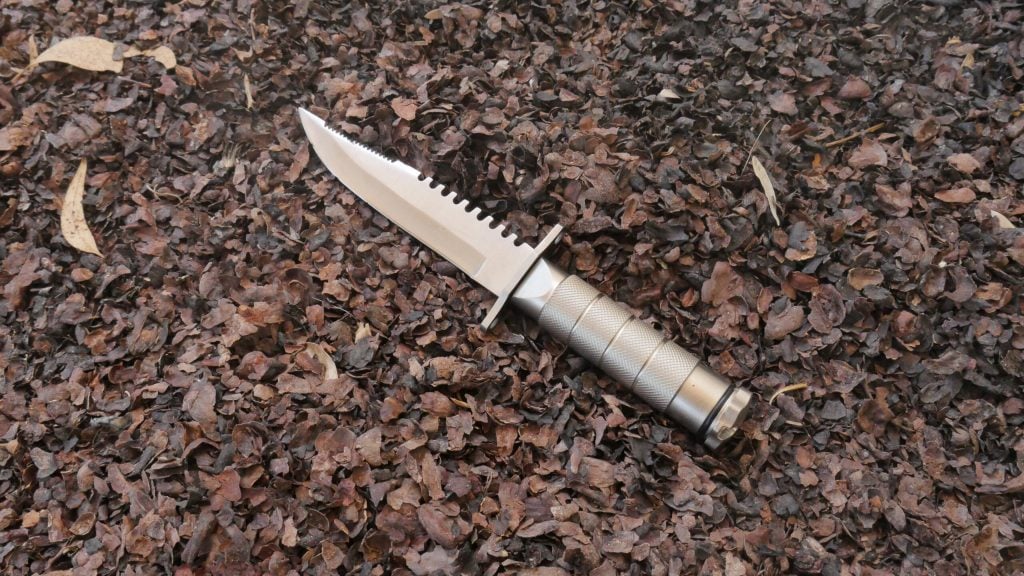
Don’t get me wrong…these kinds of knives are pretty cool, but they are not for survival. Focus on reasonable quality, decent steel, a full tang, and a proper blade profile.
I want to turn it over to you…what’s your survival knife of choice? Let us know in the comments! More knives are always better, so be sure to check out our Best Picks for EDC Knives Under $50 and $100.

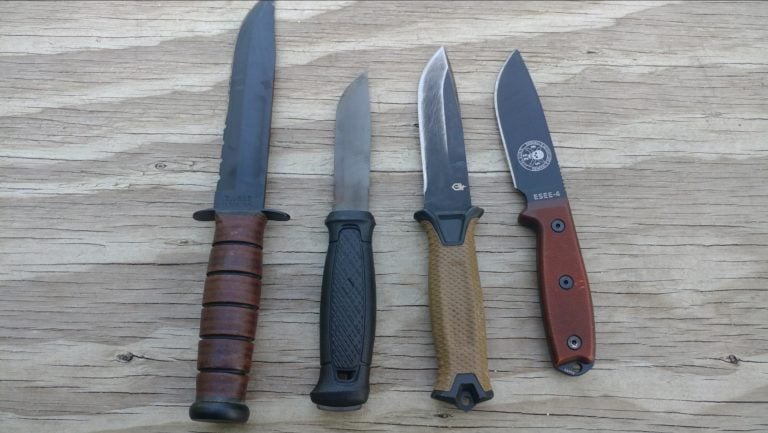
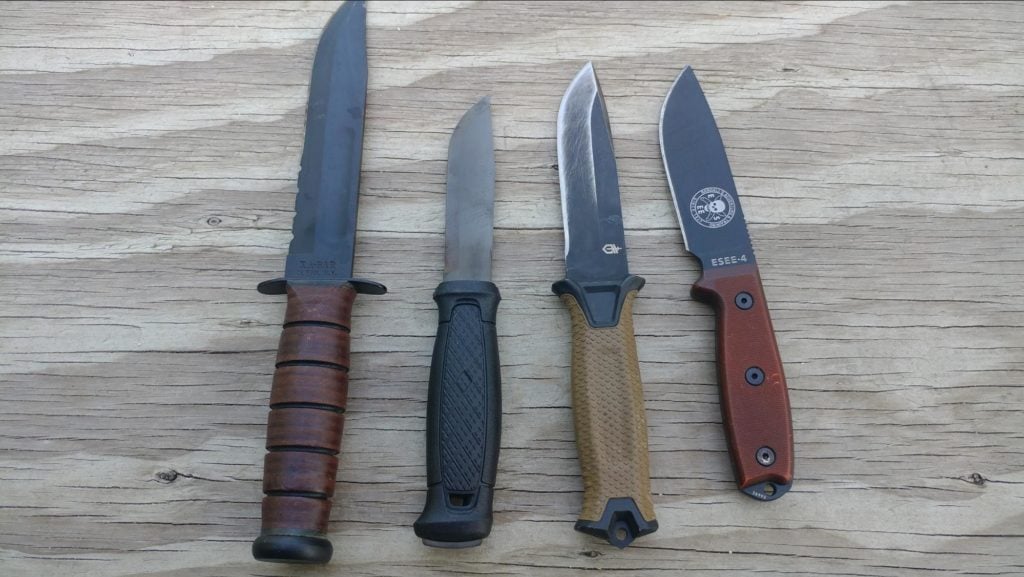

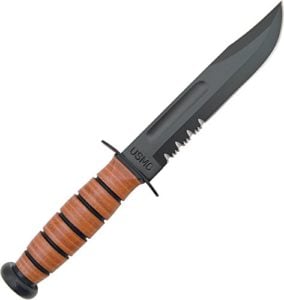

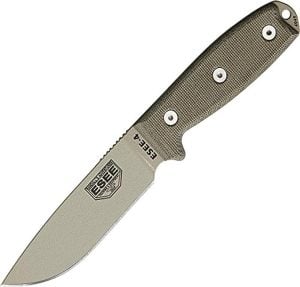

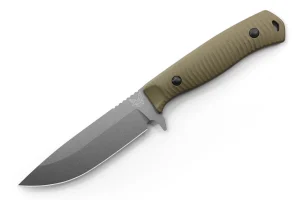
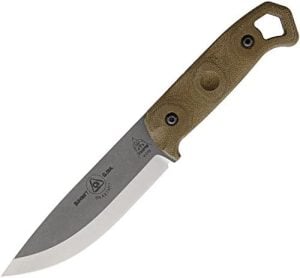







58 Leave a Reply
Well said. This is a very good article to get a new knife person pointed the right kind of options for their most important cutting tool.
Survival knife???? Something like the Boker Plus Tracker is a much better survival knife.
Or the TOPS Knives Tom Brown Tracker
both have blade style specifically designed for survival use and not just "camp knife" use.
Good article, sometimes the competition is so close I would preferred to know if any of these knives are made outside of China, that would help me decide.
The brown handle on the Esee 4 looks lighter in the Amazon pictures, and yours looks more rich and darker. Did you get that knife from that exact Amazon link?
This article is an embarrassment. But, at least you failed honestly on your own, rather than plagiarizing from someone who actually knew something about the subject.
Sorry you didn't like it, but thanks for reading.
Well a Marine wrote it. We are know for killing, not writing; however, killing with a Ka-bar works! Killing the other bastard, that is survival. Semper fi, you pog!
There are better knives than some listed here. Start with what works best in terms of features, not Brands. A full flat ground blade is what is needed, not the wedge or blood groove movie knives. Food prep is important, too and a knife that cant cut up game easily because it's sticking in the cut, won't slice or has too much thickness means your using a chopper trying to get steaks, its not pretty. I know that cutting wood etc is a critical survival skill - if there is any to be found - and a saw isn't that hard to include - the original "survival" knives did, in those silly hollow grips, along with fishing gear.
A synthetic fiber grip is the better choice for a knife like this, never leather, which soaks up water, eventually dries and loosens, causing issues. The Kabar is a copy of the Marbles 1900 era camp knife and that tech is no longer "best" in a lot of ways. Leather will fail you, micarta or G10 is superior.
Blade shape is also important and a clip limits game dressing ability. Stick to a centered drop point and drilling holes will be helpful too. This is why the Kephardt works for all around camp chores. ESEE offers it's version with the "Laser Strike" with removable handle that holds firestarting gear - something that can be more critical keeping warm. Since it also comes with a better sheath which can also hold other survival pouches, keep in mind you get all of what you need in one purchase rather than having to add more later to get the complete kit.
A high alloy knife sounds like the best option - but for all the edge holding ability there is an equally difficult resharpening - if it's high abrasion resistant steel it's hard to make it sharp too. That adds costs, adds more sharpening gear to get it right again and adds weight to the loadout. Better to get a decent quality 1095 high carbon steel - the legacy alloy that crossed the continent before nickel was ever added - and a good method which will easily restore the edge in the field, done.
I sold my Randal 14, Swamp Rat, and a dozen others and settled for the Kephardt style ESEE Laser Strike - then modded a coyote grenade pouch to add MOLLE straps instead of that cumbersome adapter for belt or gear attachement. Simple cut and fold over plate attached with the same screws that came with the ESEE belt adapter. Im pretty sure it's the best option for survival as it left money to include a flint striker, fire cubes, etc. and toss in a small ground cloth in the pack, compass etc. Paying double and having less overall isn't a smart way to do it - it's why none of the issue 1st World military issues high end alloy. It's a tool not a toy.
Survival. I'll call it hunting - Fishing - Camping / Tenting. Since I was in 8th Grade I always took my fathers 'shortened WW2 bayonet w/leather sheath.( He carried it + a Luger as a B-17 co-pilot over Italy & Germany). It chopped - It dug - It Cut . . probably not skin a deer . . I survived! When I had it . . I was nevver afraid. Today, at 76 years of age, I still like it. It's alot sharper . . looks great with my knife collection from the Philippines.
I like the Gerber Strong-arm as well. It's their budget version of their LMF II, and I own both. I've outfitted my, my better half, and the 2 older Grandkids with Strongarms on their BO Bags. Sheath that comes with the Gerber can be worn on a belt, add a couple of straps and you can wear it on your ankle or backpack strap (or plate carrier).
I keep my LMF II on my plate carrier.
If you need a good knife that's tough, takes and keeps and edge, and will last you years, the StrongArm is an excellent choice that won't break the bank.
No mention of Buck knives? I have had two for nearly 20 years that are easy to sharpen and are as sharp as scalpels.
Some of the steels mentioned above just aren't that good, and won't cut it (pun intended) in a survival scenario. The only ones worth a crap are the 1095 (high carbon) and SV30. There's nothing else on that list that I'd trust my survival to.
You want good steel? Get SV30 or S35VN, 20CV, or (ideally) 3V, which is stupidly tough. A good hardened D2 blade is also a good choice. 1095 does just fine if you want a high carbon steel (but remember the concern about rust... in a survival situation, you'll have to be extra careful).
Any of these steels will outlast (and out cut) the AUS/440 stuff, and especially the Chinese CrMoV variants.
You want a kickass survival knife? Look at the (discontinued) Cold Steel SRK in 3V steel. This is the practically indestructible knife the S.E.A.L.S. are issued and use. 'Nuff said.
Rust is only bad if you don't use it. If the blade rust just use it to cut up some meat. The fat will oil the blade and the rust will add iron to your diet. In survival mode we don't waist anything.
Seals are not issued the SRK in 3V. They were only issued SRK in AUS8 which was stainless steel. its a good knife design but far fro Indestructible. Place it close to fire and the handle rubber melts like butter. You want an indestructible knife? What are you 10 years old? Go buy a crowbar and pound wood with it like a mad chimp. Knives are designed to cut.
Great Blog! Thanks for sharing this blog post. You can buy the camping knife
First I love k bar but my favorite edc that makes a good survival knife is a bg gerber ultimate pro (old design solid )I’m a little embarrassed to admit that as it’s kind of a commercial choice but with a true full tang hammer back(Solid to blade not the bolt on) square spine about a 5.5 in blade and almost 1/4 in thick I’ll admit when I got this knife I traded for it and I got it to kill it I have thrown it like a baseball, split wood And used it to cook on a cast iron it has started many fires for me and now 5 years later I can’t kill the thing so I love it. If you take my advice and get this make sure not to get the new design it will break and you will be upset with me find the old one that is just a big solid chunk of steel
The Gerber LMF II is maybe $20-$30 more than the Strongarm, but is superior in every way. It's designed for hard, military use. The sheath alone is worth the difference.
Ummm, OK. I respect your point of view and your recommendation.
But so too isn't the modern Marine K-bar? I used one to advantage during the Vietnam conflict and it's only improved since.
That said, I'll look into the knife you recommend.
Best,
David
I own the LMF II and it is a very good knife. It is about $40 more now ($120-$130). Yes it's tougher and heavier built than the Strongarm. I own Strong-arm too. They're on my wife and older Grandkids' packs.
The issue with the KaBar, and this is a user fault for not maintaining the knife is the guard and the handle. The design of the guard can allow moisture/debris to collect extra to the blade. Not cleaning and oiling to prevent rust can weaken where the tang runs thru the guard. Stacked leather handles look nice, but they need oiled now and then to prevent the leather from drying out, shrinking and cracking. It takes years and years for both of these issues to occur, but it can happen, and needs watched for. KaBars are good knives, just an older design with some quirks in the design that can be problematic. I've 2 that belonged to my Grandpa sitting on my bench. One he used for fishing the other bigger one for cleaning skinning game. Both are built like the military KaBar, but have sport type blades. They sat for 30 some years unattended, and both have the problems I mentioned. One, I may be able to recondition. The other is shot. There's enough corrosion under the guard that it's effected the integrity of the blade.
Semper Fi!!
My knife of choice is also the Marine Ka-Bar. I just happen to back it up with a Ka-Bar Mule.
The Mule is in my EDC rotation, and the Ka-bar isd right next to my BOB.
I like the Fieldcraft knife by Brothers of Bushcraft (B.O.B.). It's heavy and it's expensive $130, but it is purpose built and has lots of features.
KaBar BK2. Not bad.
With all due respect, I think you have your knife steel sharpening qualities backwards. In general, stainless steels are going to be harder to sharpen. Carbon steels are easier to sharpen, but tend to require more frequent touch-ups (with exceptions). You're correct, however, that carbon steels tend to take finer edges than stainless does.
What about Glock Field Knife Fixed Blade?
I was also issued a Ka-Bar. It was hard work, but I got a pretty decent edge on it the first sharpening and then keeping the edge on it was pretty easy.
That being said, I am looking for a good survival knife and am drawn towards the Ka-Bar Becker BK7. Do you have any experience with it? Does anyone out there have any experience with it? I'd love to hear about it.
Bravo Tango
I'm also a Marine and have had multiple K-bars for 30+ years and have loved them so much I have not sought out anything else. I'm sure the other knives are great but I will never know for sure. However I found it to take an edge fast and keep it even longer. I found cutting open sandbags to dull it faster than anything else. I love my K-bars, 5 stars.
Morakniv carbon. Cheap, easy to sharpen and holds an edge. Also very strong. Did i mention under $20 as in well under? I have one in every vehicle and at my hunting cabin
I think ESEE makes some of the best knives when it comes to function vs price. I know you have the ESEE 4 listed, but my choice would have been the ESEE 6. Fallkniven makes some very good knives as well especially if you are looking for Stainless blades. Their F1 in VG10 is equivalent to the ESEE 4 and the S1 (5 inch blade) or A1 (6 inch blade) would both work for a larger knife. If you are looking to get something a little more expensive (and higher quality), take a look at the Swamp Rat Knife Works - RatManDu. It's one of my favorites.
Recently I've been looking at the Boker Rold Scout and the UTKS-3 or UTKS-5 from Utica Cutlery Co.
But I'm also told I have too many knives already, lol.
Uh...no such thing as too many knives. Also, there are lots of great choices out there but you can’t go wrong with ESEE.
Air Force Survival knife by Ontario and the new SP2 version are great options.
Excellent knife. Takes an edge better than anything else I’ve found.
Yep, have a few of these. Very handy, take a good edge, and the pommel is a dandy hammer.
I could think of 20 knives under $100 that I would choose before any of these.
And yet you mention none of them...
Yeah, list them and lets critique each one
My made in Finland Hackman should be on the list
any thoughts on the CIMA knives?
My heart beat w/ joy when my very own thoughts and experiences regarding the K-Bar where echo in your very informative article. I've a fixed blade full tang Scharde on my Tracking Kit and have found it to be another though competitor. Would be interested on your thoughts on this brand
USA made Schrade were good knives, no more, chinese made now.
1965 Ka-Bar still in use, EESE-5 because I'm old and can be impatient, LMF-II yup don't have a strongarm, yet.
Khukri, 3/8 inch or better backstrap, heavy and chops awesome, digs, splits, cuts, it's heavy. Love it, but I'm I've gotten lazy, so I carry the smaller knives listed now.
Cold Steel's SRK is my choice. Very simple, but crazy tough. There's a video somewhere of it being hammered point first straight through a log.
Absolutely!! My father bought me one when I was in Jr. High (I grew up in the woods of Maine) and I still have it next to me today, almost 40. It's been through an insane amount of abuse and yet it still sharpens like new, functions like new, and still looks sexy on the shelf! :) The SRK is an incredible knife. I wish I had recorded a lot of the abuse I put it through just so I could send a thank-you video to Cold Steel!
I found kbar to be over priced, they were a 7.00$ when I was in the Corps, they are not full Tang, they usually bust at the blade, they are file blade,the new ones my be better,the Corps was issueing Ontario's in the 80, they seemed better, that's why I carried 2-3 knives, breakage,loss, Have to give one to another.CRKT,Cold steel, are good,even the Schrade is good, I'd rather have Aus 8 440a,-c,420hc Aus 6.check the steel on the inexpensive knives, sheath's usually suck on the real cheap ones, but u have seen $10.00 knives work as well or better
I have 4 knives i use often, case chestnut bone sodbuster jr for pocket carry , opinel#8 small animal skining ans outdoor citchen chores, condor bushlpre for most medium tasks , condor village parang for heavy chopping , ...all 4 hi carbon steel and all together >$300 combined and easy to keep razor sharp
I have a few, that I can use in a Survival situation. I bought a cheap Gerber Bear Grylls skeletonized handle wrapped in paracord, it is not great, but it can be sharpened and it would be a good spearpoint.
I have a Cold Steel San Mai III Recon Tanto, 7.5 ". Nice razor sharp stainless steel knife like said before, 'more like a work of art'
A Western W49 Bowie, a big knife that I bought new for my last tour in Vietnam. Ready to chop Redwoods down.
I have a KABAR, several Army Pilot Survival knives (Similar, but shorter than a KABAR) and a Buck Model 124.
No offense at all. you guys always do great reviews. but please, listen. every steel you listed is either a low grade or medium grade steel alloy. If you want something bad ass get CPM 3v, M4, or something forged. I use the piss out of my knife with a 3v blade and i only sharpen it once a month, maybe. knives made of these steels cost more, but once you start using a knife in a way that you life may depend on it, those low end steel alloys dont cut the cheese. there is a great app on playstore called knife steel composition that is a superb learning tool. even sb1 or niolox steels are better than some of those listed. I have a knife made of cpm 154. edge dont last a whole day of actual use and its very chippy, big chunk chippy.. if you just need to cut a piece of paracord here and there, any of those steels are good, but they are not workhorse steels. no steel alloy has a balance of edge retention, toughness, and corrosion resistance like cpm 3v. bark river bravo series, survive knives, theres a few good companies out there that use super steels. Knives are just like guns... buy once cry once is the way you want to go.... there are some decent knives on the list like kabar or i think esse is probably good but where i live they would rust so i never bought one. not trying to dog your review but there are way better options out there for survival. and honestly you need two knives. a slicer and a knife you can abuse a bit. If you are cool with low end steels check out TOPS BOB fire craft (or something like that). they got a bow drill divot already in the knife. Go on youtubes and watch edge retention tests of different steels as well as torture tests.. corrosion tests too. Guy fromsurvive has a video... 3v steel one week outside powder rust wipes off... one year outside steel wool to scrub off rust but no pitting.
The basic Mora can be had for less than $20 and will surpass all of these except the ESEE and then it would be a toss up in my opinion. I agree with Mark Wynn, where whatever was in the authors drawer magically became the best survival knives available. The Kabar, although Awesome, is not a survival knife. Neither is the Gerber. Someone mentioned the Becker series and I say, fine survival knives each and every one. It's a matter of design. The Beckers are designed for outdoor survival use and bushcraft and the Gerber and Kabar are not. Can they be used in a survival situation if needed? Absolutely, but they would never be mistaken as survival knives (Fighting knives yes). For my money I have been super impressed by everything from Tops Knives. Cold Steel's SRK is a beast when it comes to durability and I would rather have it that the Kabar. Better steel and smaller blade to make work easier. Don't get me wrong, I still have my Kabar from my military days and if I was going up against a two legged predator there is nothing I would rather have in my hand, BUT, if I had to choose something to carry into a survival situation, it would be my Tops Bushcraft. I would love my Kabar as a backup though...
I own both the Hoffman Richter "Reaper" & the "Talon" full tang knives for survival & defense, if needed. But out in public I carry either a Fox FX-599 Karambit or the Fox Doug Marcaida designed Dart, both with the Emerson wave for open blade deployment out of your pocket..
Are you familiar with the SOG Seal Team Elite? Any thoughts, pros or cons on it? Thanks and great article!
I've always read and heard good things about SOG knives, but personally the 4 I've owned sucked. Hated all four of them almost from the first use.
Doncha' love when an outdoors writer, needing a story, sorts through his own drawer of knives and announces "these are the four best survival knives ...." That said, tongue in cheek considering the hundreds of quality "survival knives" out there, the general advice is useful and practical. Especially like the common-sense about not
purchasing a $200+ knife for hard, daily use.. For example, I have a Cold Steel "military classic" a semi-handcrafted Randall copy with San Mai steel. When I got it, I thought it so beautiful I've never used it. Should be in the museum of industrial art. Conversely, I picked up, for $3 at a garage sale a "Forgecraft Hi Carbon butcher knive, full tang, with oak slabs and brass rivets. Have used the heck out of it. Clean it with SimiChrome frequently. Thanks
As the author I could easily put a few 200+ knives up I have, but in all honesty, they really aren't great survival knives. The knives listed are the ones I've found myself using over and over and over and keeping for years. Mostly because they work, and if I lose them (Which is common) I'm not hundreds of dollars.
... and in retrospect I was being a bit smarmy, regrets ...Alas, a personal agenda about "best of" lists. That said, I find your general advice, and your review of the four knives, solid. In fact, I've been thinking about getting a Gerber LMF II for its features vs. price, and your review clinched the deal for when I visit Offutt AFB this weekend.
I like your choices, but maybe it should have been 5 knives with the addition of the Bark River Bravo 1.
Tops knives has a number of knives that fit the bill. I’m especially fond of the Tops Bob (brothers of bushcraft) fieldcraft knife.
I really like my bekker fixed blade, companion model as a general purpose hunting and skinning.. I think everyone should have other types of knives, like a thin blade for cleaning and skinning, and a general utility, which can be folding.
I "carry" a BK9. Made by kabar after they bought all beckers designs. 1095CroVan, and 9 inches of Bowie badassery.
I know it’s not a fixed blade, but I EDC my Cold Steel 4-MAX and I think it will hold up as a decent survival knife as well as a self defense knife. Like you said, you pay for what you get.